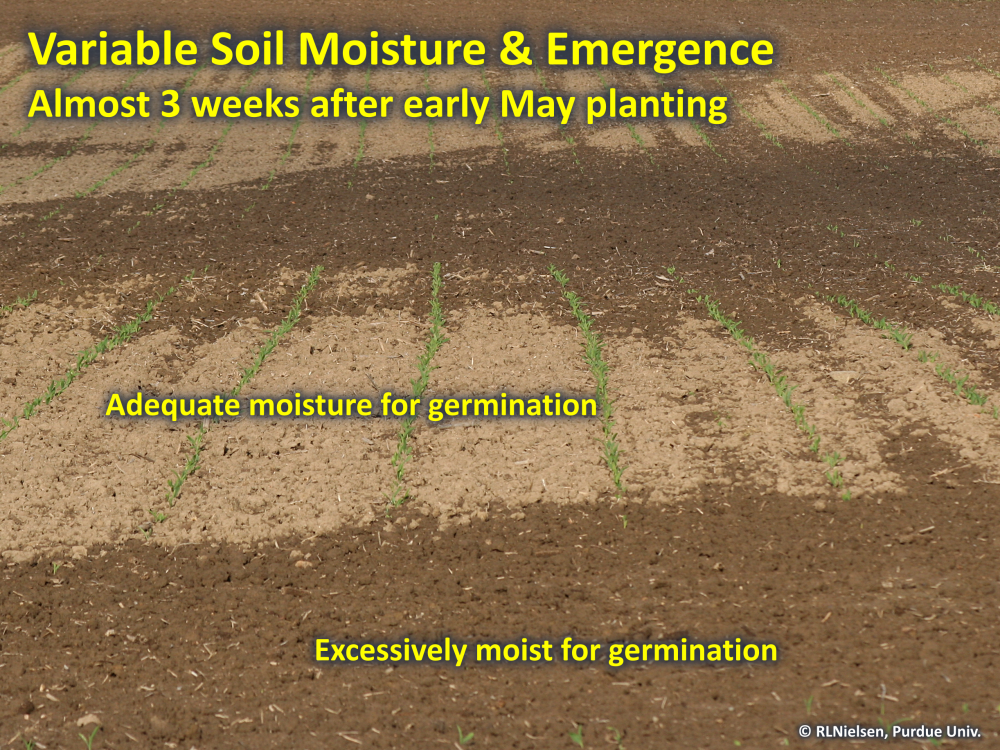
Fig. 1. Effect of variable soil moisture on corn emergence.
The practical definition of "adequate" soil moisture is simply soil that is not too dry and not too wet. Some agronomists say that the optimum soil moisture for ideal germination is field capacity. Soils at field capacity moisture, however, are too wet for planting without creating furrow compaction problems with the seed disc openers or closing wheels. A compromise definition of "adequate" soil moisture for germination is probably about 50% available water capacity. Most growers know what ""adequate" looks and feels like. Guidelines are also available from USDA-NRCS (1998) for "Estimating Soil Moisture by Feel and Appearance".
Uneven soil moisture at seed depth is the most frequent cause of uneven emergence, the results of which can easily be yield losses of 8 to 10 percent (Carter et al., 1989). Uneven soil moisture in the seed zone can be caused by variable soil characteristics, tillage patterns, unusual weather conditions and uneven seeding depth. Remember that uneven seedbed soil moisture can be defined as “adequate’ versus “too wet” (Fig. 1) as well as “adequate” versus “too dry”.
Useful Tip: When seedbed conditions are dry, make sure you choose a seeding depth that ensures uniformly adequate soil moisture for germination and emergence. Even though a 1.5 to 2 inch seeding depth is a good choice for many conditions, do not hesitate to increase seeding depth to 2.5 or 3 inches if that is the depth where uniform soil moisture is located. Planting shallower than 1.5 inches increases the risk of poor or uneven germination if rapid soil drying occurs after planting due to warm, sunny, windy days.
Based on multiple years of plot data collected by yours truly at Purdue's Crop Diagnostic Training & Research Center in westcentral Indiana, the thermal time after planting required for corn to emerge is relatively consistent at about 120 Growing Degree Days (Fahrenheit) when calculated using 4-inch depth soil temperatures. Thermal time to emergence using air temperatures is more variable, especially early or late in the planting season.
Seemingly minor variability in soil temperatures throughout a field can have large effects on germination timing when soils are hovering close to 50F or cooler. Dark-colored soils will typically warm more quickly than light-colored soils. If soils dry differently across the field, the drier areas will typically warm faster than the wet areas. Uneven residue cover (surface trash or cover crops) in reduced tillage systems results in lower soil temperatures beneath heavier residue areas than in more bare spots in the field. Uneven seeding depth risks exposing slightly deeper planted seeds to slightly cooler soil temperatures than slightly shallower planted seeds.
Useful Tips: Consider row-cleaning attachments for the planter to move aside the surface trash during planting and expose the seedbed to sunlight and its warming effects. Consider strip tillage practices in the future to better manage surface trash in a reduced tillage system.
Good seed-to-soil contact is vital for the kernels to imbibe (absorb) soil moisture quickly and uniformly to begin the germination process. Seed-to-trash contact results from “hair-pinning” of surface trash into the seed furrow during no-till planting when soil and/or trash are too wet for adequate coulter cutting action. Seed-to-clod contact results from planting into cloddy fields created by working soil too wet. Seed-to-rock contact is, needless to say, not good for proper germination either. Seed-to-air contact results from open planter furrows when no-till planting into excessively wet soils. Germination of kernels lying in open planter furrows is dependent on rainfall keeping the open furrow environment moist.
Useful Tips: Whippers, wipers, movers, fingers, and other similar trash management gadgets for the planter are most beneficial when you are challenged with rocky, cloddy, or trashy surface soil conditions. They help clear the way (literally) for the planter's double-disc openers to more easily do their job of creating an optimum seed furrow. Other planter attachments that help press the kernels into the seed furrow can improve seed-to-soil contact and seeding depth uniformity when seedbed conditions are otherwise challenging.
Severe surface crusting or compaction will restrict elongation of the seedling's mesocotyl and emergence of the coleoptile at the soil surface, potentially leading to underground leafing out of the seedling or outright seedling death. Severe sidewall compaction, caused by the smearing action of double-disc openers in excessively moist soils, can also restrict elongation of the mesocotyl and emergence of the coleoptile.
Useful Tip: Avoid excessive tillage prior to planting the crop, especially if significant rainfall is forecast prior to emergence of the crop. This will help avoid the development of dense surface soil crust. Avoid excessive downpressure on the closing wheels of the planter in order to avoid compacting the surface soil on top of the seed furow. Avoid planting "on the wet side" in order to avoid smearing the furrow sidewalls with the double-disc openers.
Click image to view larger version in a popup window. Left or right arrow on your keypad will cycle through the popup images.
Carter, Paul, Emerson Nafziger, and Joe Lauer. 1989. Uneven Emergence in Corn. North Central Regional Extension Pub. No. 344. http://corn.agronomy.wisc.edu/Pubs/UWEX/NCR344.pdf. [URL accessed Apr 2020].
Jasa, Paul. 2010. Recommendations for Avoiding Sidewall Compaction at Planting. CropWatch Newsletter, Univ of Nebraska Extension. https://cropwatch.unl.edu/unl-cropwatch-april-16-2010-recommendations-avoiding-sidewall-compaction-planting. [URL accessed Apr 2020].
Lee, Chad and Carrie Knott. 2015. Looking Ahead: Expect to See Sidewall Compaction. Grain Crops Update, Univ Kentucky Extension. http://graincrops.blogspot.com/2015/04/looking-ahead-expect-to-see-sidewall.html. [URL accessed Apr 2020].
Nielsen, RL (Bob). 2017. Heat Unit Concepts Related to Corn Development. Corny News Network, Purdue Univ. http://www.kingcorn.org/news/timeless/HeatUnits.html. [URL accessed Apr 2020].
Nielsen, RL (Bob). 2019. Visual Indicators of Germination in Corn. Corny News Network, Purdue Univ. http://www.kingcorn.org/news/timeless/GerminationEvents.html. [URL accessed Apr 2020].
Nielsen, RL (Bob). 2020. The Emergence Process in Corn. Corny News Network, Purdue Univ. http://www.kingcorn.org/news/timeless/Emergence.html. [URL accessed Apr 2020].
USDA-NRCS. 1998. Estimating Soil Moisture by Feel and Appearance. USDA Natural Resources Conservation Service. https://www.nrcs.usda.gov/Internet/FSE_DOCUMENTS/nrcs144p2_051845.pdf [URL accessed Apr 2020]